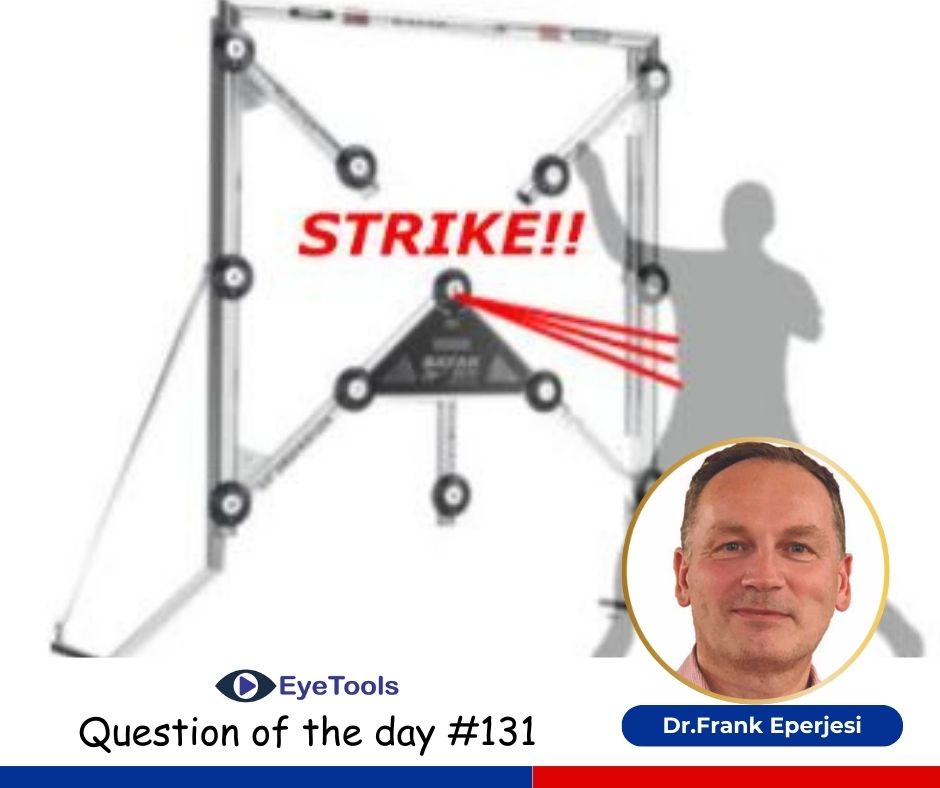
Welcome to question of the day #131
The coach of a successful local football team has asked me to examine the squad of 22 players. He suspects that some of the players don’t see as well as they could. He is aiming for promotion to a higher league and wants to make sure all his players are able to perform at their optimal level. What tests should I undertake?
I have been involved in eye examinations of football squads twice. The first being the England under 16s football team. These were elite players aiming to me the next wave of great English football players. Some did go an play for the very best teams. What I remember most is that both goal keepers had significant myopia and did not wear contact lenses during matches. When I asked if they ever had problems seeing the ball both commented that they sometimes lost sight of it on during igh crosses into the penalty area. I wondered how good they could be if they could see properly.
The second occurrence was screening a professional football team tha was trying to be promoted to the Premier League. Out of 22 players in the squad, the captain and may play maker had -3.00 DC oblique astigmatism in each eye. He did not wear contact lenses during matches. One goal keeper was a significant myope who did not wear contac lenses during matches, one of the other midfielders also had uncorrected astigmatism and a defender had colour vision deficiency. Four out of 22 players played high level football with siginificant visual dysfunction.
According to the International Sports Vision Association, vision, just like speed and strength, is a critical component in how well people play any sport.Sports vision can be describedas the science of helping athletes reach peak levels of performance through the enhancement of visual skills.
Vision has been described as the most variable of all the senses that affect sport performance. Because information gathered through vision is thought to dominate over information from other sensory systems, it is recognized as essential to successful performance in almost every sport.
A growing body of evidence confirms that visual abilities can be strengthened and enhanced by means of appropriate visual training.
For both of the football teams we went through the following screening process:
Monocular and binocular vision/visual measurement using a logMAR distance chart
Monocular contrast sensitivity measurement
Ocular tracking
Ocular alignment
Dominant eye assessment
Colour vision assessment
Stereoacuity
Many community eye specialists will be familiar these procedures. Identifying players with significant visual dysfunction is the first step in their visual rehabilation.
It’s amazing how some sports people can reach high levels of ability even when they don’t see well. However, they do seem to stop at high levels and not move to very high levels unless their visual dysfunction is corrected.



1.jpg)



.jpg)
.jpg)



_(Instagram_Post).jpg)
.jpg)
_(1080_x_1080_px).jpg)


with_UP_Cabinet_Minister_Sh_Nand_Gopal_Gupta_at_OpticsFair_demonstrating_Refraction.jpg)
with_UP_Cabinet_Minister_Sh_Nand_Gopal_Gupta_at_OpticsFair_demonstrating_Refraction_(1).jpg)

.jpg)








.jpg)



.png)




